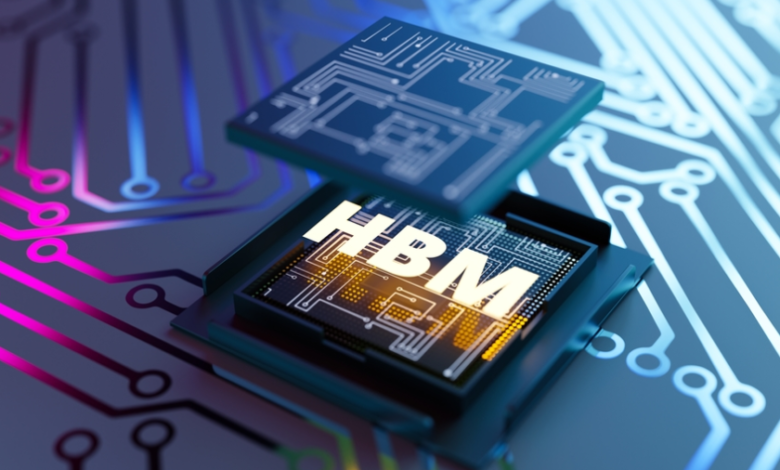Chiplet Integration & PCB Co-Design: A New Era of Hardware Architecture

The field of high-performance computing has resulted in radical changes in hardware architecture in the rapidly evolving electronics industry. This development centers around Chiplet integration, a modular method of designing systems that offer additional scalability, performance, and design freedom. Chiplet technology is becoming more and more dependent on close interaction with Design PCB techniques as it develops. The cooperation between silicon and packaging is becoming more complex than ever before as a result of the developing synergy between chipset-based systems and sophisticated PCB board design, which is setting a new benchmark in contemporary electronics.
Hardware development has historically been dominated by monolithic chips. These chips, which combined all required functionalities into a single die, operated effectively for many years. However, the monolithic technique has reached a point of diminishing returns as transistor sizes get closer to their physical limits and fabrication costs rise. Chiplets, a technology that divides intricate systems into smaller, function-specific dies coupled in a single package, are introduced.
The continually changing requirements of data centers, AI workloads, edge computing, and mobile devices are all properly met by this modular design. Chiplet architecture gives designers the chance to combine various technologies while enhancing thermal efficiency, cost-effectiveness, and power supply as performance requirements rise and space restrictions tighten.
Chiplet Integration’s Ascent
This trend puts more emphasis on co-design approaches, in which design PCB procedures are integrated into chip development rather than being a secondary effort. To make sure the system operates as intended in actual operational situations, board designers collaborate with VLSI engineers.
Co-designing PCBs: An Essential Part of System Integration
The adoption of chiplet architecture necessitates a reconsideration of traditional PCB board design processes. The board layout can no longer wait for the chip to be finished. Rather, early in the design cycle, designers must take into account the complete hardware stack, from the transistor level to the final system enclosure. This all-encompassing strategy guarantees manufacturability, compatibility, and performance optimization across the product.
With PCB co-design, engineers can model mechanical fit, thermal properties, and signal routes right away. It lowers the possibility of expensive changes or performance snags by enabling collaborative decision-making between silicon layout and PCB routing.
These systems work at frequencies where even timing or impedance errors can cause tension or severe data loss. System architects can anticipate these problems and make design adjustments before manufacture by incorporating Design PCB expertise into early-stage planning.
PCB Complexity Meets VLSI Circuit Design
VLSI circuit design is the most obvious example of how chiplet architecture and PCB co-design converge. The process of assembling hundreds of millions or even billions of transistors onto a single chip is known as “very large scale integration.” These circuits’ dependence on exact physical implementation rises with their sophistication.
Challenges with Thermal and Power Delivery
Thermal control is a significant engineering challenge in chiplet-based devices. Since each chiplet produces heat on its own, performance might quickly deteriorate in the absence of an effective cooling plan. Conventional fans and heat sinks might not be enough, particularly in small devices or systems with a lot of components. To control thermal dissipation across chiplets and the entire board, PCB co-design offers the foundation for combining heat spreaders, thermal vias, and optimized copper planes.
The delivery of power is equally important. If not carefully constructed, instability may result from several chiplets using power at different voltages or with distinct transient loads. Through co-design, engineers may model power delivery networks (PDNs) throughout the PCB and package, guaranteeing steady voltage levels, eliminating noise, and lowering ridge.
Power integrity modeling and electromagnetic interference (EMI) prediction techniques are part of Advanced Design PCB approaches, and both are critical to system stability. These tools assist designers in choosing suitable VRMs, placing decoupling capacitors strategically, and keeping all ground references clean.
See also: Software Technology and the Rise of Online Gambling
The Effects of Simulation and Advanced Tools
Advanced design automation technologies are essential to the successful deployment of PCB co-design and chiplet integration. Multi-domain simulation is currently supported by electronic design automation (EDA) systems, giving VLSI and PCB engineers the ability to examine heat flow, mechanical stress, and electromagnetic fields all in one environment.
Reducing development costs and avoiding expensive re-spins are made possible by ensuring first-pass success through the use of simulation in both the semiconductor and PCB board design stages. It also enables increased compliance with industry and regulatory standards, especially where there are mission-critical areas of activity, including medical technology, aerospace, and defense.
The Future Prospects and Interdisciplinarity
The hardware architecture is difficult to implement, which necessitates interdisciplinary collaboration. Cohesiveness in a design involves the contribution of mechanical engineers, thermal analyzers, signal integrity experts, and VLSI designers. Co-design is an operational requirement for contemporary systems, not just a way to improve workflow.
Chiplet integration will only become more popular as modularity and system scalability become more important. This strategy is anticipated to be advantageous for applications ranging from 5G infrastructure to driverless cars and AI inference engines. Close cooperation between silicon and board-level design will be essential to each of these industries.
Design PCB experts are in a position to lead innovation in this field, especially those with knowledge of co-packaged optics, RF front ends, and multi-die systems. The same is true for engineers who specialize in optimizing VLSI circuits, who now have to take board-level restrictions into account when making design choices.
In the future, through-silicon vias (TSVs), hybrid bonding, and 3D integration will all work together to push the envelope even further. The necessity of co-design approaches will be emphasized by these developments, which will call for even closer integration between chip and board design.
Conclusion
A new age in hardware creation is being ushered in by the combination of PCB co-design and chiplet integration, which prioritizes performance optimization, flexibility, and adaptability. The importance of PCB and PCB board design is becoming more significant than ever as the electronics industry moves away from monolithic designs.
Board design must now smoothly integrate with mechanical restrictions, thermal considerations, and VLSI circuit planning rather than functioning independently. In addition to improving functionality, this integrated strategy guarantees system dependability, affordability, and flexibility in response to quickly evolving technological environments.
.



